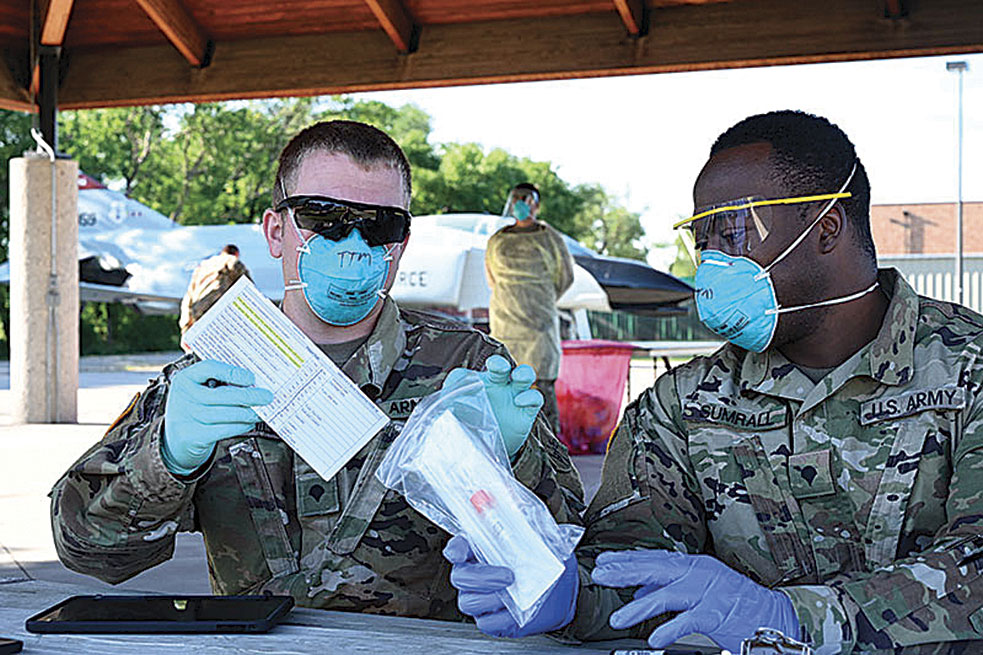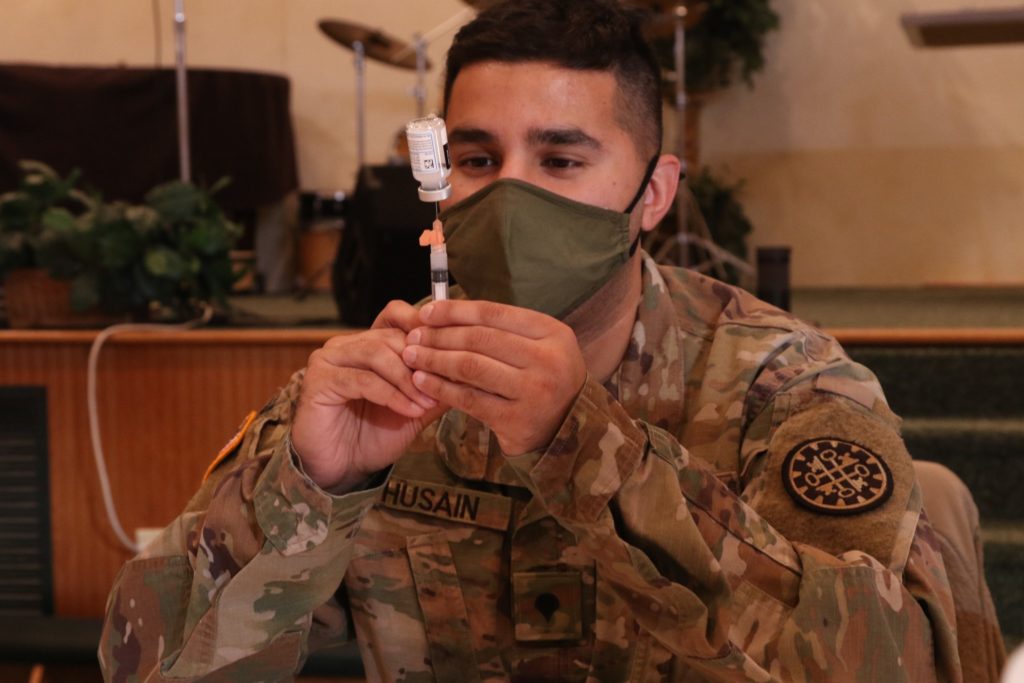Given all that the Guard has done and continues to do for this nation, the federal and state governments should look to ways they can work more closely together to support the Guard, as the Guard supports America’s recovery from the events of the past year, all the years before, and all the years ahead.
by Mary Catherine Ott
During the extraordinary times of the past year, the National Guard has played historic roles in helping to secure the peace, recover from disasters, and assist with COVID-19 testing and vaccinations. Their work has often gone unheralded. But the events of 2020 and 2021 point to the need to support the National Guard not only with words, but with actions that will help the Guard carry out its lifesaving mission – both at home, and overseas.

The past year has brought a perfect storm of circumstances that include the biggest public-health crisis in more than a century, a record-breaking 30 named storms and 12 landfalling storms in the continental United States, megafires that destroyed more than 10.2 million acres, and civil unrest across major cities over the summer and in state capitals and twice in Washington, D.C., most recently in the aftermath of the 2020 presidential election.
In response to these often overlapping crises, the Guard logged more than 8.4 million days of domestic active duty in 2020. The missions peaked in early June, when at least 120,091 of the Guard’s 450,000 members were on active duty either at home or abroad, according to data released by the National Guard Bureau.
Today, there are more than 67,000 National Guard members engaged in homeland and overseas missions, including 23,725 personnel supporting COVID-19 operations, to include vaccine distribution. Among other duties, they have been assembling thousands of COVID-19 test kits and delivering ancillary kits that accompany vaccine doses. At the peak, nearly 40,000 National Guard members were supporting COVID-19 response operations including supporting call centers, nursing homes and testing at long-term care facilities, virus screening, disinfecting schools, churches and shelters, and supporting drive-through testing.
And over the last few months, all of this was accomplished while 26,000 members were deployed from every state to protect the U.S. Capitol and the surrounding area amid election-related unrest, and even more to help support state needs.
Given everything that the Guard has done, we must do more to support them. As the commanders of the Guard in their states and territories, Governors of both parties have advocated on behalf of their Guard units, their families and the American citizens they serve.
At the beginning of the COVID-19 crisis, the National Governors Association (NGA) stressed to the Administration the critical need for authorization of Title 32 for National Guard COVID-19 operations via weekly calls with the Vice President and formal letters. Under Title 32, National Guard members support operational missions with federal pay, benefits and protections, while the Governor maintains command and control.

Throughout the COVID-19 response, as challenges with short orders became evident, Governors successfully worked to obtain authorization and multiple extensions, ensuring the protections of Guard members and mission continuation. In the summer, 42 Governors successfully convinced the President to extend Title 32 until Aug. 21, but emphasized the need for flexibility for future extensions based on individual needs of the states and territories. The Trump Administration in December extended Title 32 until the end of March 2021, followed by President Biden issuing a new presidential memorandum on his second day in office, extending until Sept. 30. Governors have now begun using the Guard for both vaccine distribution and administration, which will likely warrant continued support for Title 32. Governors have been seeking full federal funding for the use of Title 32 and they appreciate the Biden Administration’s willingness to do just that on February 3.
Beyond COVID, every year NGA works to support our military and our National Guard through the National Defense Authorization Act (NDAA) and the Defense Appropriations Act. In 2020, NGA was successful in this effort.
The final NDAA that became law last year reflected several of the Governors’ top priorities, review of use of National Guard during COVID-19 and use of Title 32, recommending the use of hazard pay for those supporting COVID-19 operations, review and expansion of policy for National Guard cybersecurity, and codifying the Work for Warriors program.
In addition, the FY 2021 Defense Appropriations bill included critical funding for Governors’ top priorities, including funding for the National Guard and Reserve Equipment Account; National Guard remediation of the common and toxic industrial chemicals perfluorooctane sulfonate (PFOS) and perfluorooctanoic acid (PFOA); funding for National Guard equipment such as HH-60 Blackhawks, C-130Js and HMMWVs; and additional funding for the National Guard counterdrug program.
This progress notwithstanding, there remains work to be done. We have not fully solved the problem of when and how a Governor may request and rapidly receive Title 32 authorization. The Guard still faces equipment and personnel shortages, as the Department of Defense continues to prioritize the modernization of the active component first. But, given all that the Guard has done and continues to do for this nation, the federal and state governments should look to ways they can work more closely together to support the Guard, as the Guard supports America’s recovery from the events of the past year, all the years before, and all the years ahead.












